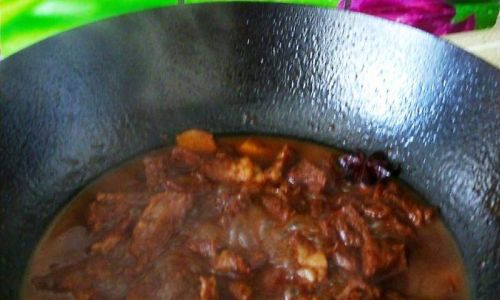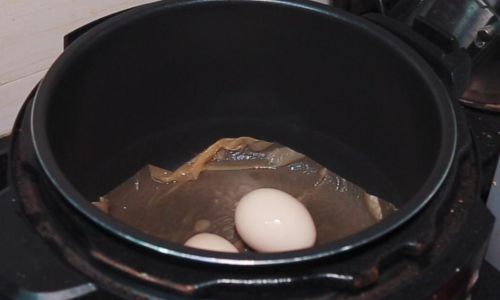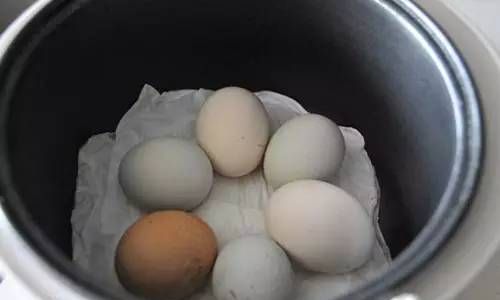Cooking meat in an iron pot is an age-old tradition that has stood the test of time. The cast iron material not only adds a unique, earthy flavor to the dish but also retains heat exceptionally well, ensuring even cooking and a perfect sear on the exterior while keeping the interior juicy and tender. Whether you’re preparing a hearty stew, a succulent braise, or a simple pot roast, mastering the art of cooking meat in an iron pot can elevate your culinary skills and delight your taste buds. In this guide, we’ll explore how to make iron pot-cooked meat truly delicious, from selecting the right meat and seasonings to perfecting the cooking technique.
Choosing the Right Iron Pot
Before diving into the recipe, it’s crucial to select a high-quality iron pot. Look for one with a thick, even coating of cast iron, which distributes heat uniformly and retains it efficiently. Pre-seasoned pots are convenient for beginners, as they are ready to use without the need for extensive seasoning beforehand. However, seasoned cast iron pots can develop a beautiful, non-stick patina over time with proper care and use.
Ensure your pot has a tight-fitting lid to trap moisture and steam, essential for braising and stewing meats. The size of the pot should accommodate the quantity of meat and ingredients you intend to cook, with some extra space for bubbling and evaporation.

Selecting the Perfect Cut of Meat
The type of meat you choose will significantly impact the final dish. For braises and stews, tough cuts like beef chuck, pork shoulder, or lamb shank are ideal because they become tender and flavorful with slow cooking. These cuts have plenty of collagen and connective tissue that break down into gelatin, enriching the sauce.
For pot roasts, look for cuts like beef brisket, bottom round, or eye of round, which benefit from long, slow cooking to become tender. Chicken and turkey legs or thighs also work well in iron pots, as their darker meat stays moist and flavorful during slow cooking.
Preparing the Meat
Before cooking, trim any excess fat from the meat to prevent it from becoming greasy. Season the meat generously with salt and pepper. For added depth, consider using a blend of coarse sea salt, freshly ground black pepper, and perhaps a pinch of dried herbs like thyme, rosemary, or oregano.
Pat the meat dry with paper towels to ensure an even sear. Moisture on the surface can prevent the meat from browning properly, which is crucial for developing flavor.

Seasoning the Pot
Before adding any ingredients, it’s a good idea to preheat your iron pot on the stovetop over medium-high heat. A drop of oil can help prevent sticking, but be cautious not to over-oil, as the natural fats from the meat will contribute to the cooking process.
Once the pot is hot, add the seasoned meat and sear it on all sides until a deep, golden-brown crust forms. This not only locks in juices but also adds a layer of caramelized flavor to the dish.
Building the Flavor Foundation
After searing the meat, remove it from the pot and set it aside. In the same pot, sauté chopped onions, carrots, celery, and garlic until they soften and begin to caramelize. This mixture, known as a mirepoix, forms the flavor base of your stew or braise.
Deglaze the pot with a liquid such as beef or chicken broth, red wine, or even beer, scraping up the browned bits stuck to the bottom. These bits, known as fond, are packed with flavor and will enrich your sauce.

Adding Aromatics and Spices
For an extra layer of complexity, incorporate aromatic spices and herbs. Whole spices like bay leaves, cloves, and peppercorns can be tied in a cheesecloth or spice bag to avoid over-spicing the dish. Fresh herbs like parsley, thyme, or rosemary can be added directly to the pot.
Tomato paste, soy sauce, or Worcestershire sauce can also add depth and umami to your braise or stew.
Cooking Techniques
Return the seared meat to the pot, nestling it into the vegetable and aromatic mixture. Cover the pot with the lid and transfer it to the oven or continue cooking on the stovetop over low heat.
For braises and stews, aim for a gentle simmer rather than a rolling boil. This slow cooking method allows the meat to become tender and the flavors to meld together. Cooking times can range from 2 to 6 hours, depending on the cut and desired doneness.

Pot roasts benefit from cooking at a lower temperature for an extended period, often in the oven at around 325°F (163°C) for 3 to 4 hours. The low and slow approach ensures even cooking and maximum tenderness.
Checking and Adjusting
Periodically check the pot, stirring the vegetables and liquids gently to prevent sticking. If the liquid level drops too low, add more broth or water as needed. The goal is to maintain a moist environment without the dish becoming too soupy.
Taste the cooking liquid periodically and adjust the seasoning with salt, pepper, or additional herbs as necessary.
Finishing Touches
Once the meat is tender and cooked to your liking, remove it from the pot and let it rest for 15-20 minutes. This resting period allows the juices to redistribute, ensuring a juicy, flavorful bite.

Meanwhile, skim any excess fat from the cooking liquid and adjust the consistency with a cornstarch slurry if needed for a thicker gravy.
Serving and Enjoying
Slice the meat against the grain for optimal tenderness and serve it with the braising liquid spooned over the top. Accompany your iron pot-cooked meat with crusty bread, roasted vegetables, or a side of mashed potatoes to soak up every last drop of the flavorful sauce.
In conclusion, cooking meat in an iron pot is not just a method but an art form that rewards patience, attention to detail, and a love for hearty, flavorful dishes. By following these steps and embracing the unique properties of cast iron, you can create meals that are not only nourishing but also deeply satisfying, bringing friends and family together around the table for a truly memorable culinary experience.






0 comments